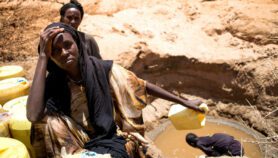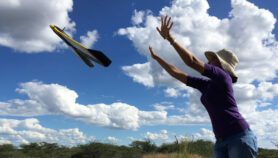By: Godwin Kowero
Send to a friend
The details you provide on this page will not be used to send unsolicited email, and will not be sold to a 3rd party. See privacy policy.
To get the best for and from Africa, REDD negotiators must hear African viewpoints, says head of the African Forest Forum, Godwin Kowero.
In the run-up to this year’s global climate negotiations in Copenhagen, the international community is fiercely debating proposals for mitigating climate change, including strategies for reducing emissions from deforestation and forest degradation (REDD).
African forests — which cover 635 million hectares and account for 16 per cent of the world’s forests — are attracting increasing attention. Partly, this is because of their potential as a sink for carbon dioxide. And partly, it is because unsustainable land use, including agricultural expansion, commercial harvesting and urbanisation, is driving high rates of deforestation and forest degradation on the continent, making it an obvious target for REDD strategies.
African perspectives
But unless African forestry perspectives are included in global climate change debates, REDD policies for the continent risk being inadequate or inappropriate.
Making REDD work for Africa means recognising the complexity and diversity of African forests.The way the United Nations Framework Convention on Climate Changecurrentlydefines ‘forest’ seriously limits the lands that would qualify for REDD in Africa. For example, most dry forests — which constitute the bulk of African natural forests — will be excluded.
It also means learning from the failings of current strategies — in particular the Clean Development Mechanism (CDM). The procedures, costs and capacity requirements for developing qualified CDM projects, in addition to political and tenurial uncertainties, and an unstable investment environment in some countries, all combine to seriously inhibit Africa‘s participation in this mechanism. Compared to other regions of the world, there has been little interest in CDM in Africa.
For REDD, there is the additional challenge of how to monitor and measure the impact of actions — in particular how to set baselines. Most natural forests in Africa are under no form of management or administration, which makes it very difficult to determine how much carbon they hold. A first requirement for REDD in Africa then, will be putting forests under effective management and ensuring secure ownership for all forests and trees. Accurate data on forest cover, deforestation, degradation and biomass productivity are also urgently needed.
Forests and trees underpin livelihoods
Perhaps most importantly, making REDD work for Africa means recognising the crucial role that forests and trees play in African socioeconomic development and addressing the underlying causes of deforestation and degradation. Forests and trees support key sectors in many African economies, including crop and livestock agriculture, energy, tourism and water. Over 70 per cent of the continent’s population depend on forest resources, mainly for energy, as well as for other livelihood support needs. Forests are crucial for maintaining local environmental quality, as well as providing international public goods and services.
Climate change poses a significant threat to African forests and their role in society. Agricultural production and overall access to food across the continent may be severely compromised. With only basic farming technology and low incomes, many African farmers will have few options to adapt and will inevitably rely more on natural forest resources to survive.
So any strategy to address climate change in Africa must alsoenhance the livelihoods of forest-dependent populations. But it is not clear how the bulk of the African population that depends on natural forests for their livelihoods would access this, or receive alternative livelihood support, under REDD.
A lot more needs to be done
Still, there are interventions that could significantly reduce deforestation and degradation in African forests.These include supporting intensification of crop and livestock agriculture around forest margins, improving domestic and industrial energy efficiency and conservation, promoting efficient and sustainable harvesting of forest and tree products, improving efficiency in wood processing, and diversifying livelihood options for the poor. For REDD to be effective in Africa, it must take into account all these needs.
Supporting existing national forest programmes and projects and implementing relevant international agreements, such as the Convention on Biological Diversity, will also considerably help attain REDD objectives. They are all already geared against unwanted deforestation and degradation.
There is much that the African forestry sector and national governments can do to ensure global negotiations on REDD are effective and serve African interests. The first is to encourage the sector to get engaged — by raising awareness on climate change within the sector itself.
But other sectors must also become more aware of the issues — especially of the inter-relationships between food, agriculture, energy and forests. Agricultural policies, for example, must fit in with overall environmental policy. And energy, urbanisation and housing policies must be harmonised with forest policy.
More research into how African forests might adapt to climate change is also needed — Africa‘s knowledge base and its capacity for the forest sector to respond to climate change is weak. Understanding how individual species respond to climate change, especially the dominant and ecosystem-critical ones, is of paramount importance for effective forest-based adaptation strategies.
African forests can help both mitigate climate change and adapt to its adverse effects. But doing so means involving the African forestry community and other key stakeholders in global climate negotiations.
Godwin Kowero is the Executive Secretary for the African Forest Forum in Nairobi, Kenya.













